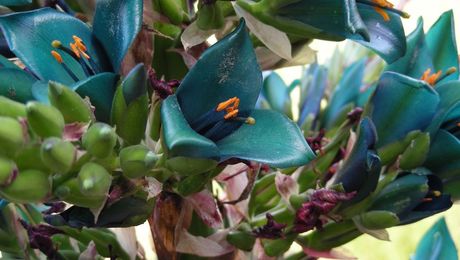

Here is the gardening version of a Zen koan: Why are they called “purple coneflowers” when, clearly, the flowers are pink? Breeders are, fortunately, making this question irrelevant with their new color options. Calling the plants simply “coneflowers” is the current trend, one we have followed in Stephanie Cohen’s article (“Coneflowers: The Best of the Best”). By doing so, we avoid not only the common-name conundrum but also the problem arising from the fact that not all of the plants are from Echinacea purpurea.
 |
|
|
The July/August 2010 issue of Fine Gardening features articles on coneflowers, drought-tolerant shrubs, garden focal points, and more. • See the table of contents |
We could call these plants “echinaceas,” something that those who insist on “all Latin, all the time” would strongly encourage. Echinacea is one of the prettier-sounding botanical names, as if it could have been the name of a Greek maiden Zeus tried to beguile. Calling these plants by their genus also saves us from the awkward common names of some of the cultivars—‘White Swan’ purple coneflower, for example.
Common names stick around for a reason: They often say more to us than Latin ones do. Sure, Latin names can contain clues to a plant’s look, habit, or habitat. But not everyone gets meaning from the phrase Echinacea purpurea. Say “coneflower,” and everyone understands that there is something conical about the bloom. Consequently, most folks would have a good shot at identifying the plant among other options.
I love common names for their personality and often their wackiness. I keep a running list: Queen of flowering trees (Amherstia nobilis), prickly couch (Zoysia macrantha), cow itch (Lagunaria patersonii), and common nardoo (Marsilea
drummondii) are among my favorites.
The common-versus-Latin question often seeks an all-or-nothing answer, which is the wrong way to go. Common names are flawed because there can be more than one for a plant, they might not be specific enough, or they might have fallen out of use. (Does anyone still call a hosta “plantain lily” or a clematis “virgin’s bower”?) But Latin names can be more confusing or impenetrable than they need to be. And for those who swear by Latin only, I ask what is wrong with saying “lilac,” “coleus,” and “tomato” instead of Syringa vulgaris, Solenostemon scutellarioides, and Lycopersicon esculentum?
| After you read this issue, please take our survey and let us know what you think of the articles. | |
And speaking of tomatoes, why do the deer eat mine when they are supposed to avoid plants with fragrant, fuzzy leaves? I guess I will have to answer that question after I figure out the purple-coneflower one.

















Comments
Log in or create an account to post a comment.
Sign up Log in